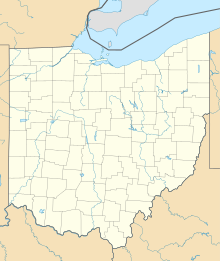| Rutherford B. Hayes Presidential Library & Museums | |
|---|---|
 | |
| General information | |
| Location | Fremont, Ohio, United States |
| Coordinates | 41°20′30″N83°07′46″W / 41.34167°N 83.12944°W |
| Named for | Rutherford B. Hayes |
| Construction started | 1912 |
| Inaugurated | Dedicated on 1916 |
| Management | Hayes Presidential Center, Inc. |
| Technical details | |
| Size | 52,640 square feet (4,890 m2) |
| Website | |
| www | |
| ||
|---|---|---|
29th and 32nd Governor of Ohio
19th President of the United States
Presidential campaigns Post-presidency
| ||
The Rutherford B. Hayes Presidential Center is a complex comprising several buildings related to the life and presidency of Rutherford B. Hayes. It is one of the first presidential libraries, built in 1916.


